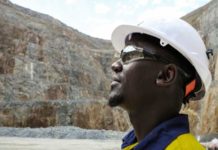
[miningmx.com] — THE warning that there could be a further delay to the start up of the first generating set at Eskom’s 4,800MW Medupi power station underscores the knife-edge situation still facing South Africa’s future power supply.
Medupi is the first of two coal-fired power stations being built by Eskom that are on the critical path to meet rising demand for power in the medium term through to 2017.
The start-up of Medupi has already been delayed by six months to the end of 2012, while the start-up of the second station – Kusile – has been pushed back by a year to end 2014/beginning 2015.
Eskom CEO Brian Dames has now warned about the possibility of a further delay at Medupi because of problems with Hitachi, which has the contract to build and install the boilers at the station.
Eskom will not elaborate on the specific implications of any delay at this stage, stating only that it will be able to provide a clearer picture on 23 November when it releases its 2011 interim results.
But you don’t have to be a rocket scientist to work out what could happen.
Apart from the possibility of further power black-outs, any additional delays in supplying the promised new power could have a negative impact on the development of projects to which Eskom has committed itself to supply power.
It’s cold comfort that Eskom has pointed out one factor working in its favour – the slow-down in the SA economy which could drop forecast demand for electricity.
Further delays in supplying power could result in companies either shelving or delaying projects they were trying to get off the ground or moving them to other locations where power is available.
Case in point is Tharisa Minerals, which is building a chrome mine and concentrator near Rustenburg.
Tharisa had also intended building a ferrochrome smelter at Rustenburg but has now opted to build it in China because Eskom can only supply the required 300MW to 400MW of power by about 2018.
Tharisa will export the chrome concentrate from South Africa to China to be smelted into higher value ferrochrome. This development runs counter to the South African Government’s stated desire to beneficiate the country’s commodities locally to maximise the value it extracts from them.
South Africa holds a huge competitive advantage in chrome over the rest of the world because it hosts the most important known resources.
The country also dominates in manganese and platinum group metals (PGMs) but the downstream beneficiation of all these commodities involves smelting them in power-hungry furnaces.
Another example of projects that could be in the firing line is the second phase of the Lion ferrochrome complex expansion being carried out by Xstrata and local partner Merafe Resources. That involves the construction of a 360,000t/year smelter at a cost of about R4.9bn.
The project got the go-ahead last October after being delayed by three years because it didn’t have a “firm allocation of capacity’ from Eskom on the power needed.
When Xstrata finally gave the go-ahead it noted that: “In addition, emerging plans within Xstrata Alloys for an “own generation’ capability further reduces Xstrata’s concerns on the availability of electricity by the time this plant is commissioned.’
Commissioning is planned for the first half of 2013, indicating this project is relying on the start-up of Medupi to supply much of the needed power. An Xstrata spokesperson said the project was unlikely to be affected by any delay at Medupi as it would initially be ramping up to full production.
Other reasons included the fact that the existing plant was running well below capacity because of market conditions and that the new smelters would be more energy efficient.
– The article first appeared in Finweek. If you want to subscribe to the digital format of Finweek visit www.zinio.com.











